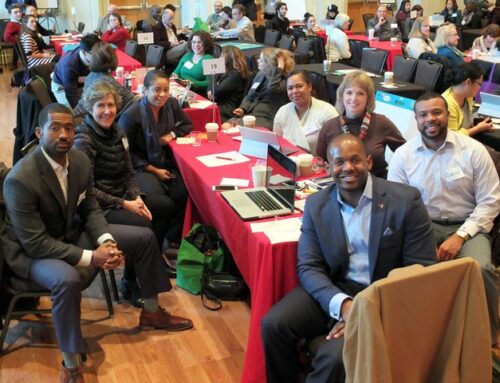Author: Douglas Brown, Author, “Let It Simmer: Making Project, Portfolio and Program Management Practices Stick in a Skeptical Organization”
Why are so many organizations having such a hard time implementing practices that at bottom are not much more than simple common sense?
The image accompanying this post is that of Sisyphus, who must endlessly carry a mighty rock up to the top of the mountain, but just as he gets close, something causes the rock to shift; it comes crashing back down to the bottom and he must start over again. In many organizations, implementing a PMO (or even just PM practices at a local level) can seem just like that.
True, my mileage may differ a bit because I’ve spent a career as a consultant paid to come in and fix things, or as an employee specifically hired for that purpose. Still, I go to enough PMI meetings and other PM professional events that I am confident in saying that many other PMs have had similar experiences.
On top of that, it was a really great pleasure to learn that Laura’s gone a good way towards implementing a PM practices based on the same principles I espouse. Which is just further proof that I’m not the only one perceiving that this is a problem for many people.
Let’s face, things would be so much better if these folks would just do what we professionals tell them.
Wouldn’t they?
Perhaps not.
Not if we’re planning to have them implement best practices as the solution to their problems.
The operative word, you see, is “best.”
Best practices are what the best organizations do (or some of them do). If you’re just trying to get this going, I hope I’m not popping your rose-colored bubble by telling you that your organization isn’t one of those best organizations (although just by realizing the need for improvement, it launched itself out of the bottom quartile). Perhaps it does want to do best practices … some day. Don’t let it injure itself (and you) by biting off more than it can chew. There will always be time for more bites later.
In auto racing, the best drivers in the world regularly tailgate one another at distances measured in inches at speed of well over 100 mph. It reduces drag and saves on fuel consumption. In that world, it’s a best practice. What if you learned how to do that yourself? What if you decided to try that on your average interstate highway, where you have a goodly number of pretty competent drivers — but few, if any, are world-class. Those drivers aren’t ready for best practices yet, even if you are. If you force the situation, there’s going to be a spectacular pile-up and, despite all your skills, you’re going to be right in the middle of it.
I support professional practices. I have several certifications that say so, along with a commitment to the associated ethical charters. But if your organization hasn’t yet acquired the habits of accountability and transparency (among others), then today is not the day to launch into a set of practices that the dominant culture simply will not support. You’re going to have to ease into it.
There’s no shame in that. How many IT-vendor organizations have achieved level 5 on the Software Engineering Institute’s maturity model? Most that claim to have done so are really talking about some little specialized cell within their overall organization. How many government organizations have achieved level 5 on the maturity models issued by the GAO or OMB? So almost nobody does all the best practices at any time, and all of them work their way up to it. If your organization is having problems with basic project (or program or portfolio) management practices, it may just be that what you’re trying isn’t quite basic enough.
The PMBoK, and the other practice standards published by PMI describe best practices. Because they are called “standards,” many people tend to assume that this is the standard that everyone is meeting, rather than a compendium of things that you will probably be doing once you have your act together. Most of those standards actually state that there is a life-cycle for the adoption of these practices, but they are pretty consistent in leaving the impression that once you get your sponsor’s approval, you refine your requirements (which are, basically, the practices described in the rest of the standard) and you execute move into the execution phase.
If you’re in that early stage of process adoption, that’s not how it’s going to happen. You’re going to have to work on that “requirements” bit. Work with the other line managers to determine what problems or issues they are facing in their world; work out how those might be solved with some specific practices that happen to be in the PM inventory. Then implement just that. Solve just that problem. It will be very quick, and your peer managers will appreciate it. Don’t expect any thanks; just be glad they’re letting you play with them.
Get some wins under your belt. Once you’ve shown how some seething irritants can be resolved by applying some PM practices, you’ll start getting co-operation (in fact, you’ll start getting demands to do more). Don’t push the envelope; just do something else to solve a problem they really want to solve. Thanks to a phenomenon I call the Pasta Principle, you’ll soon discover that fixing one thing related to PM almost always means you have little choice but to fix the other 2, 5, 9 things that are connected to it.
Some of you may be saying: “But the contract I’m working on requires me to institute practices conforming to xyz standard. I can’t do what you suggest.” Sure you can. Remember, you can count the organizations that are truly fully compliant with any of the professional standards … well,maybe not on the fingers of your hands, but it wouldn’t get into three digits. As long as your END point is compliant, then you are instituting those practices. Just not today. Taking the simmering approach, you’ll get to a respectable maturity level much faster than if you tried to jam everything in on Day One, and it will live on after you are gone. Best practices are what the best organizations do.
People always want an answer to “PM Lite.” I’ve learned that there is no good answer to that. But “it depends on the situation,” while true, is a bit too much of a cop-out. Over time, I’ve found several steps you can take that seem to work in most organizations. You can learn more about how this collaborative approach works, and how to make it work for you in my book (cited below) and on the resources website that accompanies it (free if you’ve got the book).
Many of Laura’s posts are right up the Simmer System’s alley. I’m looking forward to more of her work and your comments, both here and on my blogs.
Douglas Brown

Thanks for taking the time to read this article.
Click here to receive these blog posts right to your inbox.
Fill out our one-minute survey if you have topics you would like read more about.
I welcome your feedback and insights. Please leave a comment below.
See you online!
Warmly,









[…] Douglas Brown on making process changes stick: “Best practices are a destination, not a starting point.” […]